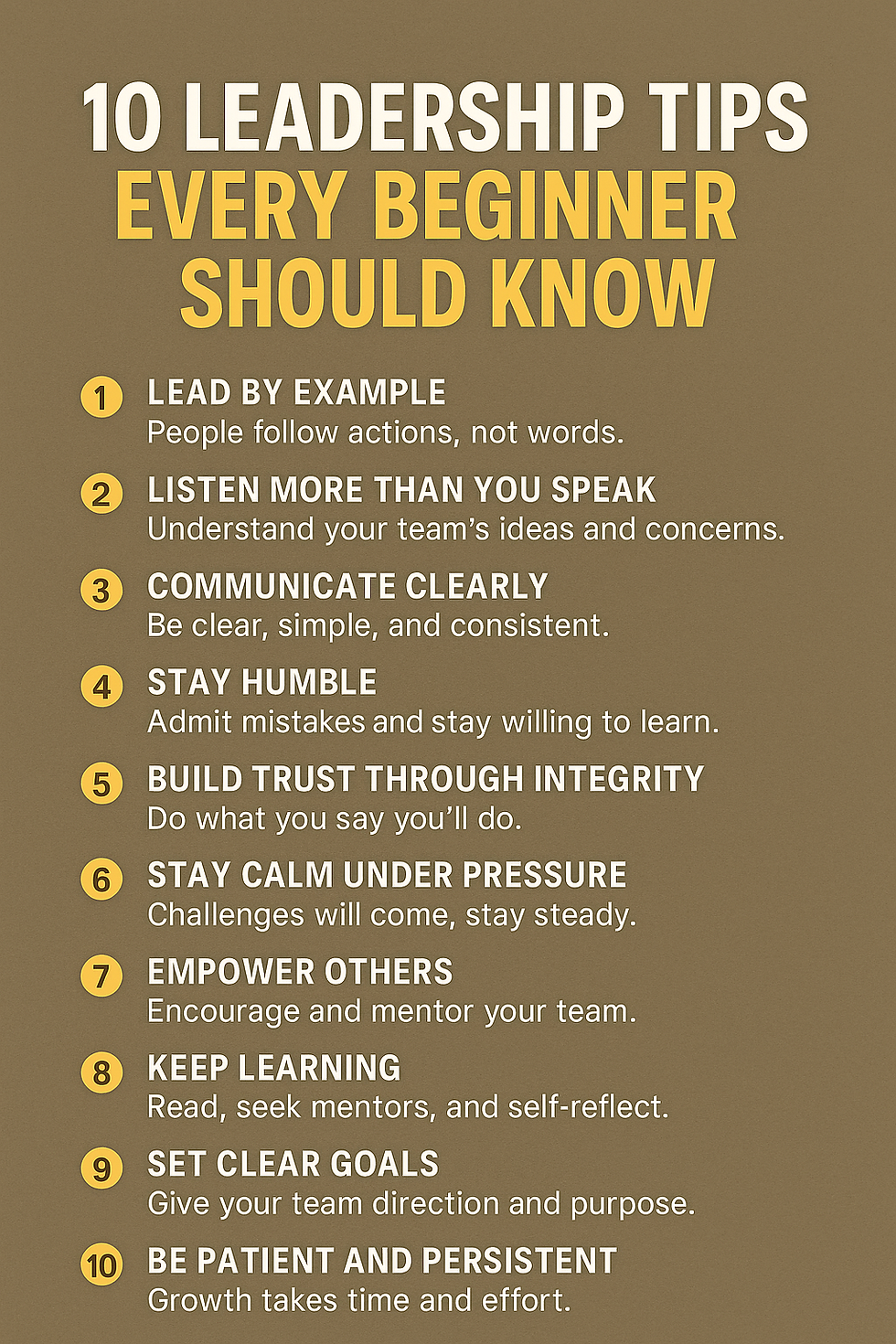
Leadership isn’t about having a title — it’s about earning trust, building influence, and helping others succeed. Whether you’re leading a team, a class project, or even just yourself, the basics of leadership will shape your growth. Here are 10 leadership tips every beginner should know:
1. Lead by Example
People follow actions, not words. Show up on time, stay disciplined, and set the standard you want others to follow.
2. Listen More Than You Speak
Great leaders listen first. Pay attention to the ideas, struggles, and goals of your team — it builds respect and trust.
3. Communicate Clearly
Confusion creates frustration. Be clear, simple, and consistent in your instructions and expectations.
4. Stay Humble
Leadership isn’t about ego. Admit mistakes, give credit to others, and stay open to learning.
5. Build Trust Through Integrity
Do what you say you’ll do. Integrity is the foundation of long-term leadership success.
6. Stay Calm Under Pressure
Challenges will come. Strong leaders remain steady, helping their team stay focused and resilient.
7. Empower Others
Leadership is not about control, but about creating more leaders. Encourage, mentor, and give responsibility.
8. Keep Learning
The best leaders are lifelong students. Read books, seek mentors, and practice self-reflection.
9. Set Clear Goals
Direction is everything. Establish realistic, measurable goals so your team knows where they’re heading.
10. Be Patient and Persistent
Growth doesn’t happen overnight. Leadership is a process of consistent effort, practice, and perseverance.
Final Thought
Leadership is a journey, not a destination. Start small, apply these principles daily, and watch how you grow into the leader others are inspired to follow.





